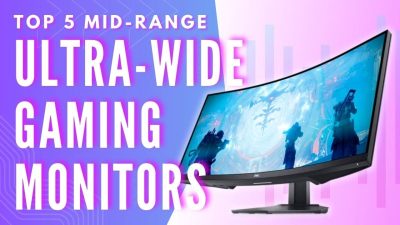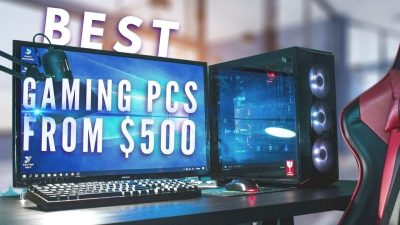📢 Disclosure: Some links on this page are affiliate links. As an Amazon Associate, I earn from qualifying purchases at no extra cost to you. Thanks for your support.
Is the Quest 3 still worth it?
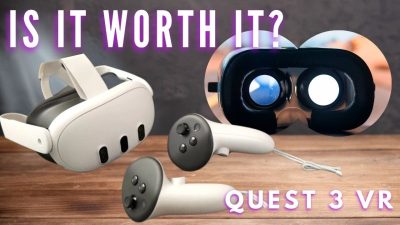
Virtual Reality (VR) has made massive leaps forward, and the Meta Quest 3 aims to push the boundaries even further. With a slimmer design, improved resolution, faster processing power, and full-color passthrough, the Quest 3 sets a new standard for standalone VR headsets.
After trying out the Meta Quest 3 for the first time (a year ago now), I was eager to see whether the advancements in VR technology truly has become more user-friendly for the Meta range and the broader VR headsets as a whole. The Quest 3 promises more than just enhanced gaming; it ventures to redefine immersive experiences with its cutting-edge mixed reality capabilities, positioning itself as a pivotal leap forward in VR tech.
After spending over 1 year with the VR headset, we take a deep dive and assess whether the Meta Quest 3 justifies its hype in today’s market and whether its features, ranging from a slimmer build and sharper display to its full-color passthrough, stand as a monumental upgrade or a nuanced step in VR’s evolution.
If you already have this headset, our guide on the best Quest 3 accessories can help you get an even better experience.
Design & comfort: Sleeker but slightly heavier
At first glance, the Quest 3 has a slimmer form factor from the previous model, which makes the headset easier to balance on the head, despite its slightly increased weight compared to the Quest 2. The reduction in size, primarily due to thinner lenses and streamlined components, contributes significantly to user comfort during extended use.
However, that’s not to say that it won’t give you neck strain after a few hours of use. While it can vary depending on the person using it, I personally found it not too stressful when worn with the standard headstrap. However, you do need to be careful when moving around as that’s when you feel more strain from the extra weight. Some people find it can cause headaches, for those I’d recommend upgrading the head strap.
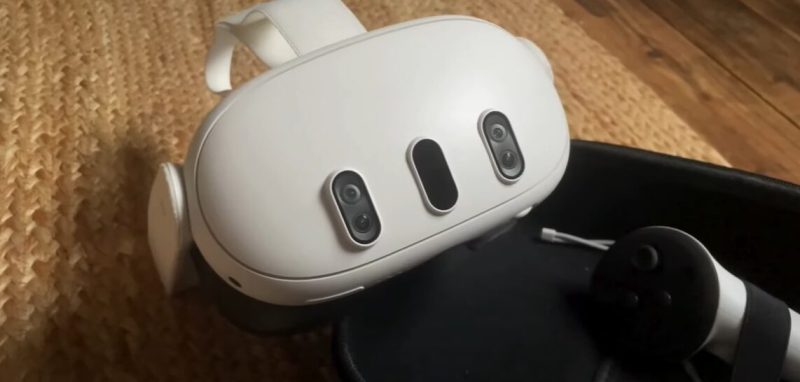
There are some good ones on the market now that can help with the discomfort and impracticality of wearing it. I use the BOBOVR headstrap; while it’s not perfect, it works much better for staying on the head when playing more active games like Thrill of the Fight. But it does dig into the back of your head more, which will be uncomfortable for some.
The standard strap on the Quest 3 is a simple redesign or the Quest 2 strap. It features a Y-shaped spacer and padded facial cushion, which is supposed to enhance fit and stability. It helps to distribute the weight more evenly around the head. By adjusting the strap, you can get a more secure fit, which you’ll need for dynamic activities like VR workouts.
Y-Shaped Spacer & Padded Cushion – Helps distribute weight evenly, improving comfort for longer sessions.
Easier to Adjust – Volume buttons and IPD adjustment wheel are conveniently placed on the bottom.
More Balanced Fit – Feels easier to wear despite a slight increase in weight.
Potential Issues: While it’s better balanced, some users still report neck strain after extended use. If you’re planning on long gaming sessions, consider upgrading to an Elite Strap or aftermarket VR headstrap for added support.
Display & visual quality: A significant upgrade
Where the Meta Quest 3 shines, is with it’s significant upgrade in display resolution, with 2064 by 2208 pixels per eye. This is nearly a 30% increase in pixel density compared to its the Quest 2 and that translates to sharper and more detailed visuals, when you’re dealing with keyboards and text details it really helps. The transition to pancake lenses further enhances this effect, offering a larger sweet spot and reduced chromatic aberration, although some light reflection between lens layers are still there.
The Meta Quest 3 supports an expanded field of view, now reaching approximately 110 degrees horizontally. This enhancement not only improves peripheral vision but also deepens immersion, and it’s really noticeable when you’re in a VR environment. Though, when looking down, you can still see the room you’re in. It’s really hard for designers to get a flush fit, I imagine that will improve in future versions but you kind of forget about it anyway after focusing on the VR screens for a while. There are some simple facial interfaces you can add to the Quest 3 that block light from the nose gap. Check out my other article here for that and other best Quest 3 accessories.

So how immersive is it? It’s high-resolution display and innovative lens technology makes the “screen door effect,” where individual pixels are visible, much less of an issue. But scenarios requiring attention to detail, such as virtual driving simulations or intricate puzzle games is where this becomes more noticeable. And even in the highest 4k setting on a 360 degree video there will be areas that are unclear. With the space it has to cover, some areas do seem stretched. If you’re watching something on the standard screen and not the full 360 degree video, then quality is significantly better.
When you compare it to something like the Rokid Max Smart Glasses, the quality on the meta quest feels worlds apart. I know AR glasses are made with less tech and have less capabilities, but if it’s simply viewing movies you’re after, it makes sense to watch them on the Quest 3 for higher quality. Whereas, for comfort, the smartglasses are better for their much lighter frame.
Improved Resolution – Each eye gets 2064 × 2208 pixels, a nearly 30% increase from Quest 2.
Larger Field of View – 110-degree FOV, offering wider peripheral vision and a more immersive experience.
Reduced Screen Door Effect – Thanks to pancake lenses, pixelation is significantly reduced.
Limitations:
- Some lens glare is still noticeable, especially in high-contrast environments.
- VR text and small details are much sharper, but in 360-degree videos, some distortion can still be seen.
If sharp visuals are a priority, the Quest 3 delivers a major leap in clarity. Not as good as Apple Vision Pro but for the price of the Quest 3, they are hard to beat.
Processing power: Faster & more efficient
The Quest 3 is equipped with the Qualcomm Snapdragon XR2 Gen 2 chipset, a significant upgrade from the previous generation. This advanced chipset not only enhances the overall speed but also boosts graphical performance more than twofold compared to the Snapdragon GPU in the Quest 2. This tech ensures that the Quest 3 can handle more complex and graphically intensive tasks with ease. Pulling up multiple monitors and switching between tasks seems like no effort at all.
This increase in processing power makes it better all round, not only for applications, but gaming aswell and the additional power really helps support these features. But having said that, it’s still only around 2-3 hours of runtime. Some headstraps include an added battery pack which can extend your sessions, see them on our list of best Quest 3 accessories. But keep in mind these will make the VR headset even heavier.
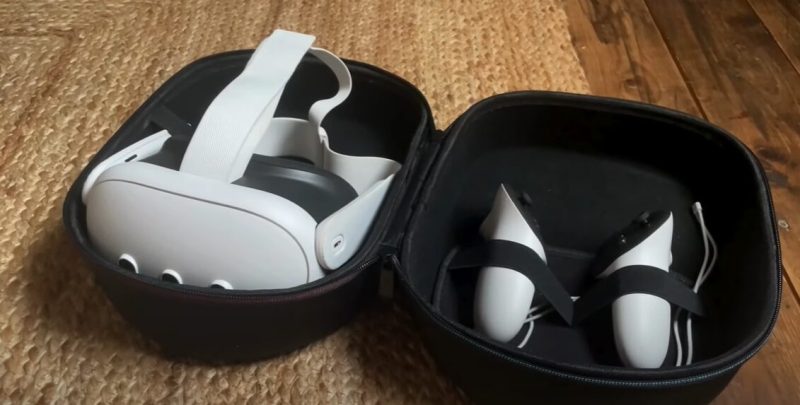
Twice the Graphics Power – Performance is significantly faster than the Quest 2.
Multi-Tasking Support – Can handle multiple monitors and apps with ease.
Smoother Gaming – Runs graphically demanding VR titles more efficiently.
This increase in processing power not only makes gaming smoother but also enhances productivity applications like virtual desktops. But with only around 2-3 hours of runtime, there’s still alot of space for improvement.
Battery life: Still needs improvement
More on the battery performance, the 2 to 3 hours of runtime duration is consistent with previous models under similar usage conditions. However, engaging in activities that demand higher processing power, such as mixed reality features, may decrease battery life even further, necessitating more frequent charges. The fast charge helps allot though, and as we mentioned above, the portable battery packs that you can add to some headstraps extend the battery even further. I personally don’t use mine that came with the BOBOVR headstrap due to it being a little too heavy, I’d rather just plug the Quest 3 in charge when it’s run out.
There are also ways to maximize battery efficiency so you can extend your time using the headset. By adjusting the brightness or lowering the refresh rate this can help save battery time. There’s also a power saver mode you can enable which adjusts the settings automatically.
Battery-Saving Tips:
- Lower the brightness or refresh rate for extended playtime.
- Enable Power Saver Mode to optimize battery usage.
If you want to spend longer hours on the Meta Quest, a headstrap with portable battery is the way to go. Although, I personally don’t think it’s neccessary, and it gives you a break to let it charge.
Mixed reality & passthrough: A game-changer?
So, how do the mixed reality and pass-through hold up? Passthrough quality is important because it significantly benefits productivity apps, allowing users to interact with their real-world environment while engaging with virtual interfaces.
In this case, the device features a stereoscopic 4MP passthrough, a substantial upgrade from the monoscopic, lower-resolution passthrough of the Quest 2. This enhancement allows for a more vivid and natural representation of the real world, making the transition into MR less jarring. During my tests, applications like “First Encounters” and “Immersed” really shows this improvement. With Immersed being a multi-tasking app that blends monitors with virtual displays, it does work really well.
However, looking through the cameras alone, the room does feel grainy and it can leave you feeling disjointed for a moment when you take them off.
4MP Stereoscopic Passthrough – A major upgrade from Quest 2’s grainy black-and-white.
More Natural Interaction – Allows users to seamlessly blend real-world elements with VR interfaces.
Great for Productivity Apps – Apps like “Immersed” let users create virtual monitors in real space.
While improved, passthrough can feel slightly grainy, especially in low-light settings. Despite that, mixed reality integration is one of the biggest strengths of the Quest 3.
Controllers & hand tracking: More responsive, but not perfect
As for controllers, The Quest 3’s are designed with an ergonomic focus, featuring a variety of buttons, triggers, and joysticks that provide precise and intuitive control. Enhanced by advanced motion tracking technology, these controllers allow users to replicate real-world movements accurately within the virtual environment. The inclusion of haptic feedback adds a layer of realism by providing tactile sensations during interactions, such as shooting a virtual gun or touching virtual objects.
Despite the ergonomic advancements, there are noted challenges with the tracking accuracy and responsiveness of the Quest 3 controllers, particularly in fast-paced games. Something that I’ve noticed is when playing sport games. For the most part it is very responsive, but I have noticed the hands and arms can lag especially when playing boxing VR. I’ve noticed it can occassionally freeze and then jump forward. This is called rapid arm movements, where the controller fails to accurately track, causing disruptions in gameplay. It is a drawback especially for games that require quick reflexes, such as “Gorilla Tag”, sport games and “Beat Saber,” where precision is crucial.
If you don’t want to use controllers, the Quest 3 offers hand tracking, which is a leap forward in terms of gesture recognition. This system allows for a more immersive and intuitive interaction within VR environments by accurately capturing and translating user hand gestures. However, there are occasional inconsistencies in gesture recognition, which can momentarily disrupt the immersive experience, especially in poorly lit environments or when hands move outside the camera’s field of view.

Enhanced Haptic Feedback – More immersive vibrations during interactions.
More Ergonomic Design – Feels comfortable for long gaming sessions.
No Tracking Rings – Smaller and sleeker than Quest 2 controllers.
Issues With Fast Movements:
- Rapid arm movements in games like Beat Saber and Gorilla Tag sometimes cause tracking errors.
- Hand Tracking works well for simple gestures, but can be inconsistent in low-light conditions.
While controllers are solid, tracking could still be refined for fast-paced gameplay.
Pricing & value: Does it justify the cost?
When considering the specifications, such as the advanced Qualcomm Snapdragon XR2 Gen 2 chipset, high-resolution display, and improved mixed reality capabilities, the pricing is really good within the high-end VR market. When you compare it to the Apple Vision Pro, it seems like much better value for money. And even though the Quest 2 was priced lower at launch, it has significantly lesser features.
For those new to VR or on a tighter budget, the now-discounted Quest 2 is still a good option. And the Quest 3s is another well priced VR headset now too. However, for users seeking stronger VR performance with future-proofing capabilities, the Meta Quest 3 still provides compelling value despite its higher price point.
The Quest 3 comes in two storage options:
128GB model (base model).
512GB model for those who need more storage for games & apps.
While more expensive than the Quest 2, the improvements in performance, display, and mixed reality justify the cost.
How It Compares to Alternatives:
- Cheaper than Apple Vision Pro, which is priced significantly higher.
- More powerful than the Quest 2, making it a future-proof option.
- More affordable than premium PC VR headsets, while still offering impressive standalone performance.
If you’re new to VR, the Quest 2 remains a good budget option. But if you want the latest VR technology with long-term support, the Quest 3 and the quest 3s are the better investments.
Overall: Is the Quest 3 worth it?
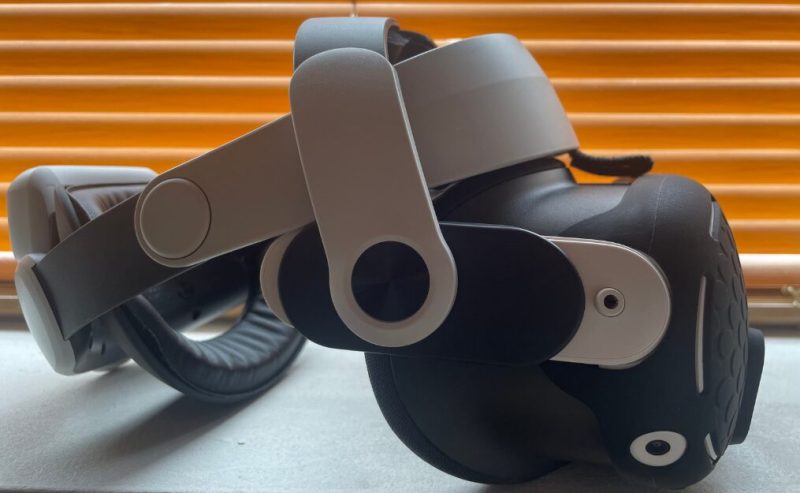
Even though it’s not perfect, it’s still very impressive. And even with its imperfections, the meta quest 3 gives you the ability to experience where VR tech is currently at and for a decent price. When you compare it to headsets that have higher quality components like the Apple Vision Pro, you realise that the Quest 3 keeps alot of necessary features and is able to cut on expensive hardware such as OLED lenses, allowing the consumer to get into VR at a cheaper price point.
It also offers major improvements over the Quest 2 and if you want somewhat of a middle ground, the quest 3s does a good job and providing that.
Pros:
✅ Higher resolution & improved FOV for better visuals.
✅ More powerful Snapdragon XR2 Gen 2 chipset for smooth gameplay.
✅ Full-color passthrough for enhanced mixed reality.
✅ Comfortable design with better weight distribution.
Cons:
🚫 Tracking issues during fast-paced games.
🚫 Battery life could be better.
🚫 Passthrough still slightly grainy in low light.
Reasons to Buy It?
VR enthusiasts looking for the best standalone headset.
Gamers who want better graphics & performance.
Users interested in mixed reality & VR productivity tools.
Reasons to Skip It?
Those on a budget (Quest 2 is still a solid cheaper option).
Users who need ultra-long battery life (consider an external battery pack).
Gamers who rely on super-fast controller tracking (PC VR may be better).
- Display: It has a sharp, high-resolution display with pancake lenses, that give clearer visuals.
- Processor: The Meta Quest 3 is powered by the Snapdragon XR2 Gen 2 with 8 GB RAM, it runs apps and games smoothly with console-like graphics.
- Cameras: The full-color passthrough unlocks true mixed reality, letting you blend digital objects into your real space.
- Controllers: Touch Plus controllers bring TruTouch haptic feedback, this helps to add realistic sensations when you interact although I prefer using them with a case for better grip.
- System: The Quest 3 runs on Meta Horizon OS, so you get multitasking windows, app integration, and all Quest content in one ecosystem, it still feels like the best VR OS I've used to far.
Please note: Product visuals, specifications, and descriptions can change over time. All information is provided for reference; confirm the latest details on the official product page.
Interested in some new and upcoming VR headsets? Read our guide on the best VR headsets.
Thanks for reading, I hope this Meta Quest 3 review helped you understand the Quest 3 a little more! By the way, if you’re on the lookout for a new laptop, make sure try our Laptop Finder Quiz. Otherwise, check out our similar tech reviews on the links below.

